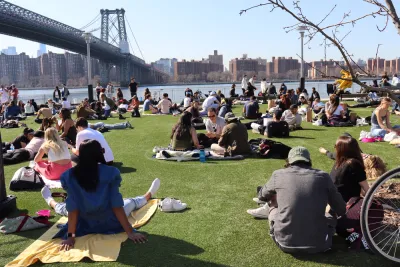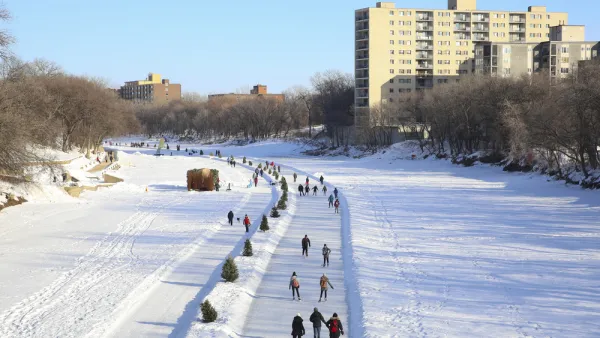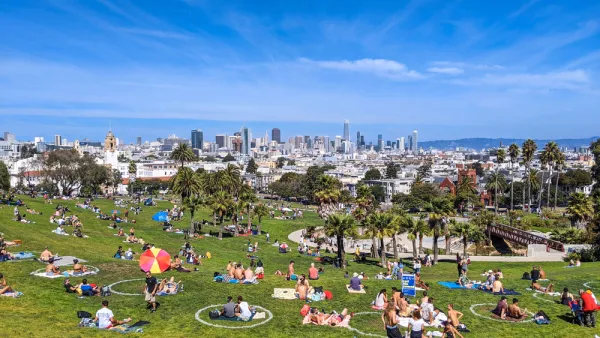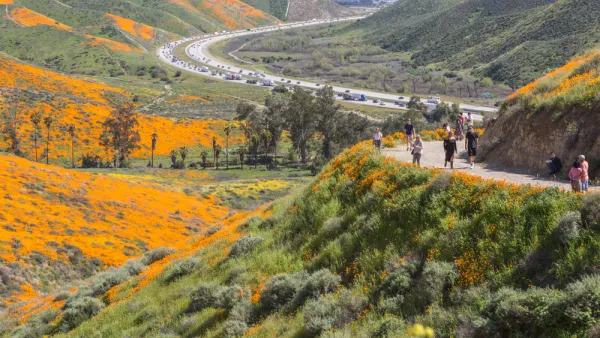The pandemic forced a large-scale reexamination of how public spaces and urban form impact public health and equity. Now, policymakers can learn from those innovations to plan for the future of cities.

A "recent Knight Foundation study, led by international design group Gehl, looked at seven public spaces in four cities during the pandemic, in order to determine what made them thrive." As James Finley writes in Next City, "In addition to unique tactics deployed by local teams, the study found that a key ingredient of successful public spaces was putting community members at the center of the work, which enabled spaces to be developed and activated in a way that met diverse resident needs."
The study highlighted the urgency of designing impactful infrastructure projects as unprecedented levels of federal funding is distributed to cities as part of the American Rescue Plan and the Infrastructure Investments and Jobs Act. "This once-in-a-lifetime influx of resources can be used to promote the reinvigoration of inclusive and safe outdoor spaces that will increase exposure to the arts, prepare for future generational shifts, and prioritize equity to engage marginalized populations."
"Among parks surveyed in the Knight study, several experienced an increase in foot traffic. In particular, the Detroit Riverfront and Philadelphia’s Cherry Street Pier both saw a threefold increase in use from November 2019 to November 2020. This suggests that community-led design creates a meaningful opportunity for planners to respond to an increased desire for public space moving forward," writes Finley. The study concludes that "our revitalized public spaces must be adaptable to how people want to use them from moment to moment, and year to year."
The study recommends "conscious placement and design" of underused urban spaces that can be reinvigorated as multifunctional parks with "broadly applicable features" that are useful and relevant to a broad segment of users. The study's authors encourage robust public engagement to understand the diverse needs and desires of diverse communities. "[C]ity planners need to fully embrace community-led design and follow the individual preferences and listen to the needs of their unique populations."
FULL STORY: Living With the Virus Means Designing Innovative Public Spaces of the Future

National Parks Layoffs Will Cause Communities to Lose Billions
Thousands of essential park workers were laid off this week, just before the busy spring break season.

Retro-silient?: America’s First “Eco-burb,” The Woodlands Turns 50
A master-planned community north of Houston offers lessons on green infrastructure and resilient design, but falls short of its founder’s lofty affordability and walkability goals.

Delivering for America Plan Will Downgrade Mail Service in at Least 49.5 Percent of Zip Codes
Republican and Democrat lawmakers criticize the plan for its disproportionate negative impact on rural communities.

Test News Post 1
This is a summary

Test News Headline 46
Test for the image on the front page.

Balancing Bombs and Butterflies: How the National Guard Protects a Rare Species
The National Guard at Fort Indiantown Gap uses GIS technology and land management strategies to balance military training with conservation efforts, ensuring the survival of the rare eastern regal fritillary butterfly.
Urban Design for Planners 1: Software Tools
This six-course series explores essential urban design concepts using open source software and equips planners with the tools they need to participate fully in the urban design process.
Planning for Universal Design
Learn the tools for implementing Universal Design in planning regulations.
EMC Planning Group, Inc.
Planetizen
Planetizen
Mpact (formerly Rail~Volution)
Great Falls Development Authority, Inc.
HUDs Office of Policy Development and Research
NYU Wagner Graduate School of Public Service





























